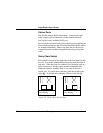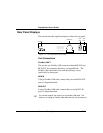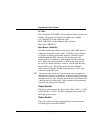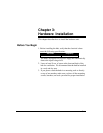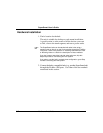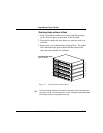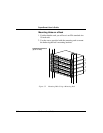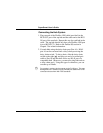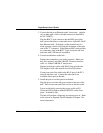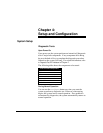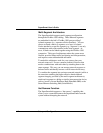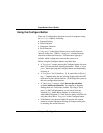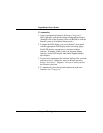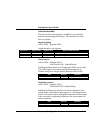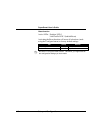
SuperSmart User’s Guide
3-6 Hardware Installation
3. Connect the hub to an Ethernet trunk, if necessary. (Applies
only to hubs with a slide-in module transceiver installed in
the ALT PORT.)
Plug the BNC T-type connector into the BNC port of the
hub, and use this port to connect the device to the RG-58A/U
thin Ethernet trunk. If the unit is at the terminal end of a
trunk segment, connect a 50-ohm (
Ω) terminator to the open
end of the "T" connector. If the Ethernet BNC trunk port has
no connection, plug in the BNC T-type connector and lock
both ends with a 50-ohm (
Ω) terminator.
4. Connect workstations to the hub.
Prepare the workstations you wish to network. Make sure
they have properly installed 10BASE-T network interface
cards, or external 10BASE-T transceivers.
Prepare twisted-pair cables with RJ-45 plugs at both ends.
The length of each cable should not exceed 100 meters.
Connect one end of the cable to the RJ-45 port of the PC’s
network interface card. Connect the other end to an
available station port on the hub.
5. Install the power cord and power on the hub.
Plug the power cord into the power socket at the rear of the
hub. Then connect one end of the cord to an electric outlet.
Power on the hub by pressing the power switch to ON.
Check the LED indicator marked PWR/CPU on the front
panel. It should be ON.
The hub will perform a diagnostic test upon power on. Refer
to the section on
Diagnostic Test LED Indicators in Chapter 2 for
more information.



